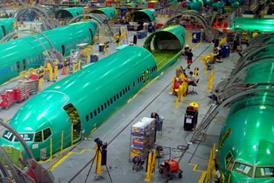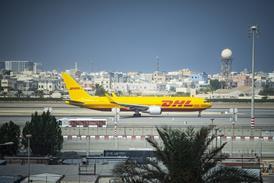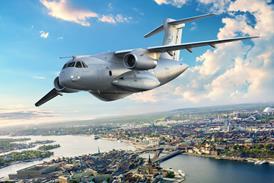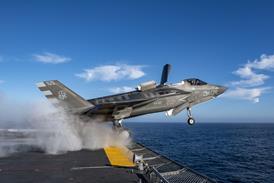Airbus questions certification plan for new widebody
Airbus is questioning why its rival Boeing should be allowed to "grandfather" the certification of the new 747-8 on the back of the original version of the aircraft, which entered service in 1970. And European regulators want Boeing to be required to undertake a full evacuation demonstration of the new 747 variant - something it avoided doing when the -400 was introduced in 1989.
Under previous 747 stretch development studies, such as the 747X of 2001, Boeing had intended to adopt an all-new certification path, but says it will pursue certification for the 747-8I/8F under an amended 747-400 type certificate.
The 747-400 was itself approved as an amendment to the certification of the original 747-100 that was launched in 1966.
"Many of the parts aren't changing from the -400, and where it is changing the -8 will be evaluated in co-operation with the regulatory authorities in compliance with the latest regulations," says Boeing, which late last year received US Federal Aviation Administration approval for this plan.
However, Airbus chief operating officer customers John Leahy questions why the new 747 should not be required to meet all the safety standards introduced since the original version was designed. "We've made all these changes to safety requirements in the last 40 years and they're going to build to the standards of the 1960s. We should all be certificating aircraft to the same, latest standards," he says.
Leahy identifies two areas of the regulations where the new 747 is non-compliant - its structural design and door layout. The 747 was certificated as a fail-safe design before the requirements for damage tolerance (that catastrophic failure as a result of fatigue or damage will be avoided) were introduced, and Boeing would have to demonstrate compliance (or modify the design) if it sought a new type certificate for the -8.
According to Leahy, the door configuration in the forward part of the 747 main deck - where passengers in the nose-section have no forward exit option - would also be non-compliant. "You have to have two directions to get out," he says.
Meanwhile, the European Aviation Safety Agency says that it will begin talks with the FAA in March on the certification of the 747-8I, when it will request that a full evacuation demonstration is undertaken. "We consider the 747-8 as a derivative of the 747-400 that requires significant design changes and falls into the criteria of a 'very large transport aircraft', so will require a full-scale evacuation test," it says.
The FAA is the lead authority for US-built aircraft. It says that it has not yet decided whether it will require a full demonstration as "it is too early in the process and the design of the aircraft has not yet been fixed".
However, the 747-8 launch customer is a European airline - Lufthansa - and therefore EASA requirements will have to be taken into account. Boeing was unavailable for comment regarding its plans for an evacuation test.
Source: Flight International























